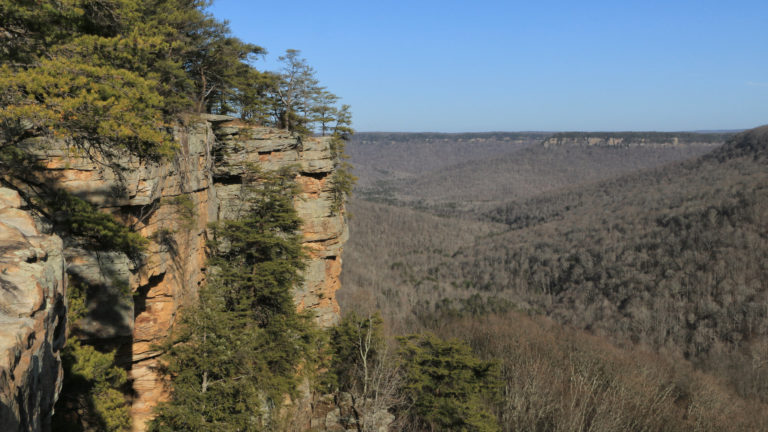Research Explores Climate Effects on Small, Biodiversity-rich “Island” Ecosystems of the Southeast

A new SE CASC-supported paper, Ecological islands: conserving biodiversity hotspots in a changing climate, was published today in the journal, Frontiers in Ecology and the Environment, presenting results of work by SE CASC researcher and USGS ecologist Jennifer Cartwright.

The Southeast is home to areas of rich biodiversity, and in some cases these species-rich areas are unusually small. Ecological “islands” in the Southeast are small habitat patches such as rock outcrops, bogs, springs, sinkholes, cliffs, glades, barrens, and mountain balds. These isolated habitat patches support plant and animal species that have adapted to the stressful environmental conditions found in patches, and in many cases are confined to that ecosystem. These ecological communities are often referred to as “insular ecosystems.” Though small in size, insular ecosystems support many rare species—especially plants and invertebrates—that are important to global biodiversity and the natural history of our region. Insular ecosystems are often produced by distinctive landscape features, such as habitat fragmentation, which may influence their vulnerability and ability to adapt to a changing climate. These critical ecosystems also contribute to “geodiversity”: the diversity of soils, geology, and topographic settings that may help some species better adapt to changing environmental conditions.

A new research article, Ecological islands: conserving biodiversity hotspots in a changing climate, now available online in the journal Frontiers in Ecology and the Environment, presents a simple conceptual framework for anticipating, studying, and managing climate-change impacts in insular ecosystems. The framework was produced by synthesizing over 300 site-level studies. Many rare plants in insular ecosystems have evolved adaptive strategies to cope with high levels of physical stress, such as high temperatures, shallow soil, seasonal soil saturation or desiccation, extreme pH, or major disturbances. Indeed, many rare plants thrive in these stressful environments because their competitors from the surrounding landscape are excluded. Therefore, predicting climate-driven shifts to stress regimes can be a useful lens through which to anticipate habitat changes for rare species in these unusual ecosystems.

This paper builds on previous publication, Insular ecosystems of the southeastern United States—A regional synthesis to support biodiversity conservation in a changing climate, co-authored by Cartwright, which presented detailed analyses of climate-change vulnerability for eight insular ecosystem types of the Southeast. Both of these publications were supported by SE CASC through the project, Assessing climate-sensitive ecosystems in the southeastern United States. More recently, Cartwright has teamed up with Dwayne Estes, director of the Southeastern Grasslands Initiative, on a new SE CASC-funded project to assess the science needs for southeastern grasslands (including many small, insular grasslands) in a changing climate. Collectively, these efforts are helping managers anticipate and plan for climate impacts in ecosystems throughout the Southeast, to conserve biodiversity and provide stewardship for the rich natural resources of the region.
- Categories: